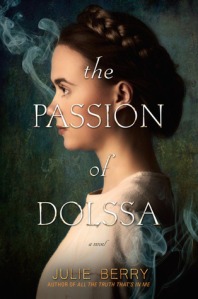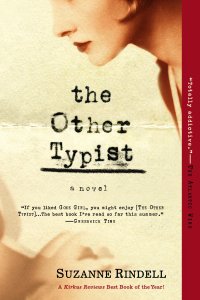 Unreliable narrators in fiction make for some fascinating reading, and what could be more unreliable than a confession? Strangely, I happened to read two such novels recently.
Unreliable narrators in fiction make for some fascinating reading, and what could be more unreliable than a confession? Strangely, I happened to read two such novels recently.
The first is a teen novel that I hadn’t had on my to-read list until it won a Printz Honor: The Passion of Dolssa by Julie Berry. I had heard the Printz buzz around this book, but it never sounded that appealing to me. I mean, it is set in the 1200’s and is about religion/faith/miracles. The description just never grabbed me. But once I finally gave it a chance, I was engrossed from the very beginning. The book uses many voices to tell the story, but the primary storyteller is Botille, whose confession about what happened twenty-six years ago with regard to the heretic Dolssa is full of layers as she protects the people she cares about from the Inquisitors. What really happened and what is Botille’s invention for the Inquisitor is up for debate and that is only a part of what makes this book interesting.
 The second is another historical novel—published for adults—set in the 1920’s: The Other Typist. I picked up this book because of my interest in the time period, especially women’s lives at that time. I really wasn’t expecting this strange (though not necessarily in a bad way) story that left me wondering what really happened even after I finished reading. The reader knows from almost the very beginning that things don’t end well for our main character, and the story isn’t suspenseful so much as it is filled with foreboding in a way that kept me reading despite knowing that bad things were bound to happen. Don’t get me wrong, it takes a while to get there. It is a confession after all, and it takes time to get to the juicy parts of any confession, as our narrator well knows from her employment as a typist at a police station where her job is to record and type confessions. If you can stick with the story to the end, you’ll be left fitting the pieces of Rose’s story together to determine what you think really happened.
The second is another historical novel—published for adults—set in the 1920’s: The Other Typist. I picked up this book because of my interest in the time period, especially women’s lives at that time. I really wasn’t expecting this strange (though not necessarily in a bad way) story that left me wondering what really happened even after I finished reading. The reader knows from almost the very beginning that things don’t end well for our main character, and the story isn’t suspenseful so much as it is filled with foreboding in a way that kept me reading despite knowing that bad things were bound to happen. Don’t get me wrong, it takes a while to get there. It is a confession after all, and it takes time to get to the juicy parts of any confession, as our narrator well knows from her employment as a typist at a police station where her job is to record and type confessions. If you can stick with the story to the end, you’ll be left fitting the pieces of Rose’s story together to determine what you think really happened.
Both of these books were engrossing in a way that surprised me. They each ended up being yet another reminder to myself to be open in my reading choices. Hey Self: Even if a book isn’t what you were expecting or if it doesn’t seem immediately appealing, give it a chance. You might be surprised.




